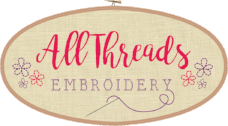
More Information
Jane’s beautiful Welsh sampler is a delight for the eye, the more you look at her the more you will see! With a wonderful palette of 32 colours Jane filled her sampler with traditional Welsh motifs contained within a stunning floral border. Roses, lilies and convolvulus in full bloom graciously sweep around this beautiful sampler. Jane diligently stitched pretty vases of flowers such as Ragged Robins from the Lychnis family, and Auriculas in the Primula family, two sailings ships, birds and butterflies abound, and two beautiful bowls of fruit.
The moment we saw Jane’s cats we knew that Hands Across the Sea Samplers had to reproduce this sampler for ailurophiles to stitch. Cats appear in two scenes. To the bottom left a cat quietly watches two “merchs fach” (young girls) contemplate their day but it is at the bottom right where they really make their presence known. Two very large silver tabbies are seen frolicking with a ball in the garden. For us they are the highlight of this wonderful sampler.
We know of one other sampler that is reminiscent of Jane’s. The sampler was stitched by Mary Martin and was finished one year after Jane’s in 1856. We have found a Jane Banister and a Mary Martin in the 1848 births records of the registration district of Bangor, Caernarvonshire, Wales. Bangor lies on the coast of North Wales near the Menai Strait which separates the island of Anglesey from the mainland. We have found Jane in the 1841 census return and Mary in the 1851 census return. Both censuses note that the girls were born on the Island of Anglesey. On August 15th, 1870 in Brymbo, Denbighshire Jane married Samuel Roberts. The 1881 census records that they had four children and were living in the village of Llay, not far from Wrexham.
Jane’s sampler is what Welsh sampler lovers affectionately call a “Welsh Woolly”. Numerous 19th century Welsh samplers were stitched with wool on Penelope Canvas, a double thread canvas ground. During the Victorian period Berlin woolwork a type of embroidery worked in worsted wools imported from Germany, was hugely popular. Printed patterns books became readily available and it is probable that Jane’s needlework teacher used the patterns from such books in her classroom.
Whilst there are 18th century Welsh samplers in museums and private collections the majority of surviving documented Welsh samplers were stitched in the later half of the 19th century. As the century progressed Victorians realised that people from all levels of society needed to be able to read and write, and education became more important. The Church of England became active in education and erected “National Schools” which taught children reading, writing, arithmetic and religion. Sewing and stitchery became an integral part of a schoolgirl’s education and much classroom time was spent practising stitches.
The reproduction of Jane’s beautiful needlework has been a team effort. Her sampler has been painstakingly charted by Sandra Moffitt, her booklet produced by Nicola Parkman and the model lovingly stitched by Leona Sweeney. At the very core of Hands Across the Sea Samplers there is a team of needleworkers who are passionate about antique samplers and being able to share those samplers with you.
